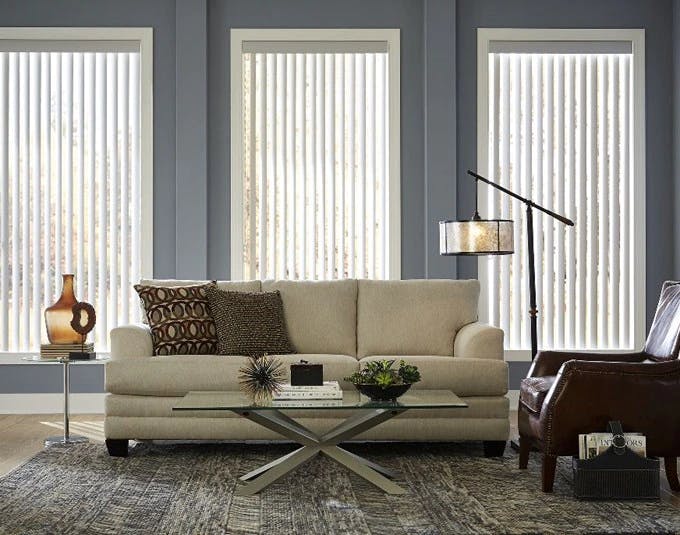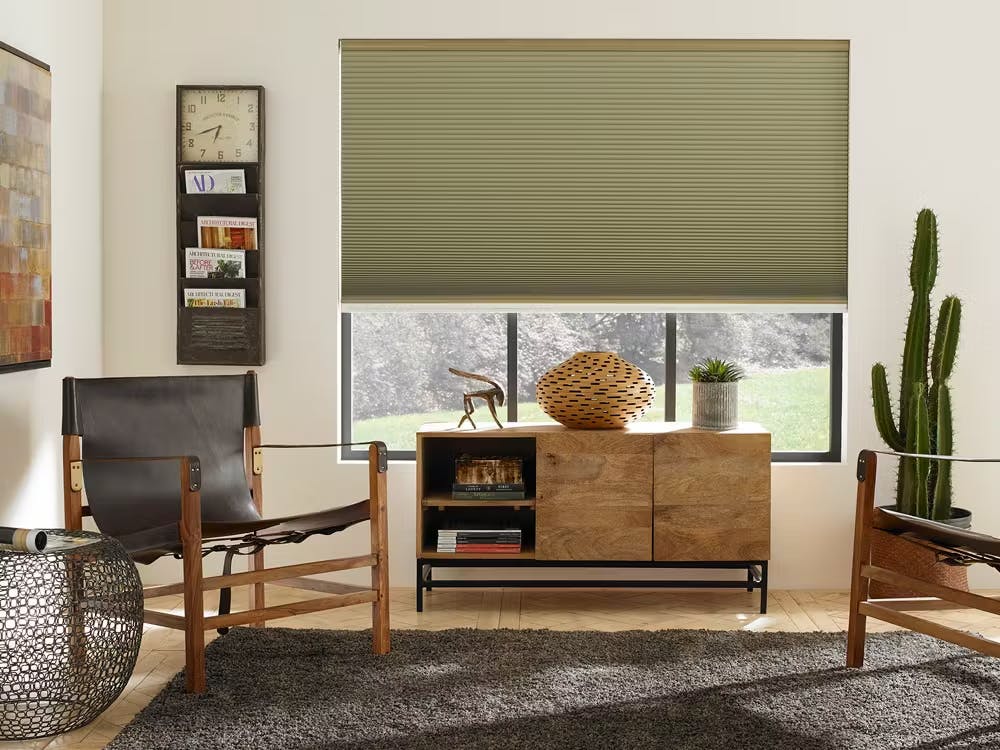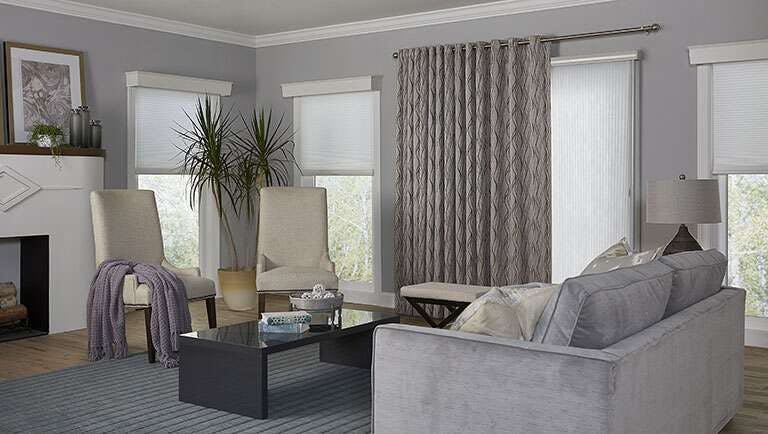What Is a Picture Window?
A picture window is a non-operable window that’s typically a larger-than-average size. Many picture windows extend from floor to ceiling or can even cover an entire wall with glass. Because picture windows don't open, they’re best for spaces that don’t require ventilation.
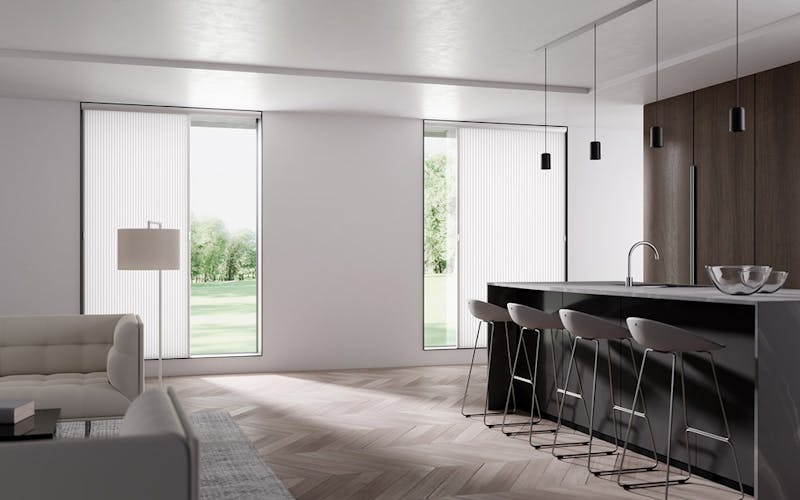
How Do You Cover a Large Picture Window?
Large picture windows can highlight a lovely view or fill a room with natural light. Finding blinds, shades, or curtains for picture windows can be tricky, but it’s essential for privacy, glare control, and energy savings. We recommend window treatments that come in large sizes, such as vertical blinds, cellular shades, and curtains.
Vertical Blinds
There’s a reason vertical blinds are ideal go-to choices for large picture windows and sliding glass doors. They’re durable and easy to install and clean. The moisture-resistant PVC or vinyl vanes take a beating from frequent sunlight and UV exposure, so fading is minimal. If they get dirty from pets, kids or regular usage, simply wipe them down with soapy water and a sponge.Unlike traditional window treatments that move up and down, vertical blinds easily tilt or slide open, even when covering a large window. One thing to consider with vertical picture window blinds is that they’re better suited for windows that are wider than they are tall.
More about Vertical BlindsHorizontal Cellular Shades
Like their vertical counterparts, horizontal cellular shades are insulating, sleek, and lightweight to accommodate widths up to 156 inches. Choose a continuous cord loop lift option if considering cellular shades on large windows. This lift makes it easier to raise and lower shades without straining to pull a cord.These shades are available in various fabric opacities, from light-filtering to blackout options.
More about Cellular ShadesDraperies and Curtains
If you want added drama and have adequate wall space on either side of your picture window, curtains are a great solution. Custom-sized curtains are essential for large windows because off-the-shelf options rarely come in the widths needed to get full coverage.If you only want picture window drapes as an accent, you can save money by installing drapes only on the outside edges, like bookends. This option gives a row of windows the appearance of one long piece without the bulkiness of heavy curtains covering the entire window.For more versatility and privacy, consider layering blackout curtains with a double curtain rod on top of sheer curtains.
More about Drapes and CurtainsOther Treatments
If you want to cover a wide picture window with Roman Shades, Woven Wood Shades, Wood and Faux Wood Blinds, but they can’t be made at the size you need, consider splitting the width with a 2-on-1 or 3-on-1 headrail.
A headrail is the top bar of a blind or shade that houses the operating mechanisms. The terms 2-on-1 and 3-on-1 mean two or three blinds are hanging from one headrail that can be operated independently. That helps to relieve excess weight and strain on the mechanisms.
Multiples-on-1 headrails often allow you to add a standard valance. A valance is a long piece of fabric or trim that clips to the top of the window treatment to give the separate blinds or shades a unified look.
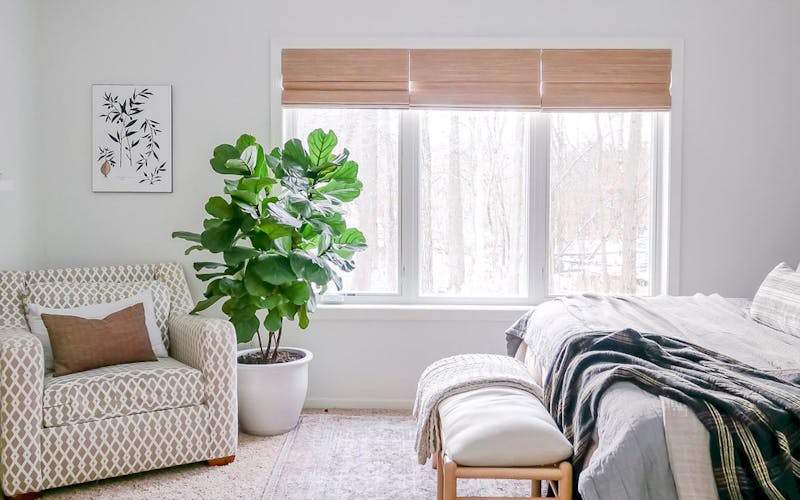
Need More Help?
Blinds.com designers are available to help find the perfect picture window coverings. Get expert advice for free at 800-505-1905, or join a live chat.
Learn more about covering uniquely-shaped windows here: Blinds and Shades for Windows with Unique Shapes.
Picture Windows FAQs
-
A picture window is typically larger than average and can’t be opened. Styles can extend from floor to ceiling or cover an entire wall with glass.
-
Because they’re larger, we recommend vertical blinds, drapes, vertical or horizontal cellular shades, and Roman shades for picture windows.
-
A picture window is typically larger than average and can’t be opened. Styles can extend from floor to ceiling or cover an entire wall with glass.
-
Vertical cellular shades provide a modern look, cover a large area and are energy efficient. Inefficiency can be a big concern with picture windows due to their size, so vertical cellular shades are a great solution. Light-filtering and blackout options are available.
Horizontal cellular shades provide the same benefits as their vertical counterpart but offer a unique look and can be made in larger sizes.
-
Curtains and drapes add depth and drama to larger windows. Curtains come in custom sizes to cover an entire window, while drapes add a chic, modern look, particularly when used as accents to frame the window.
